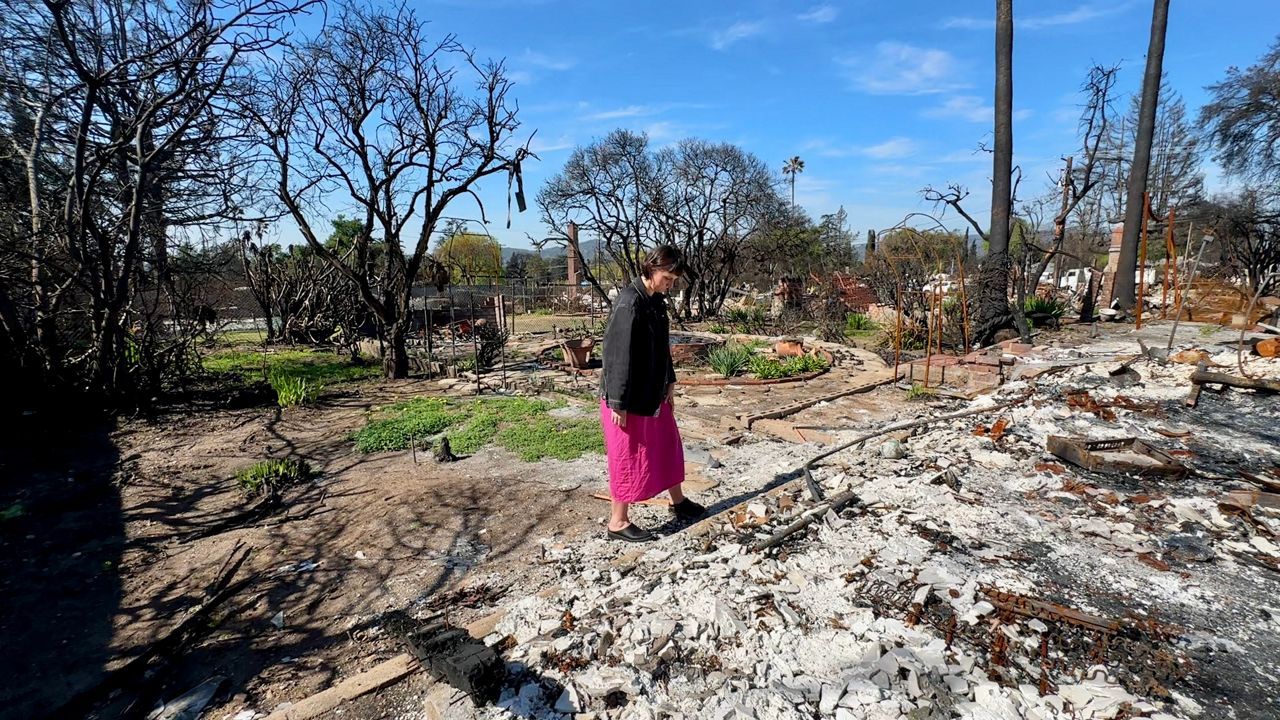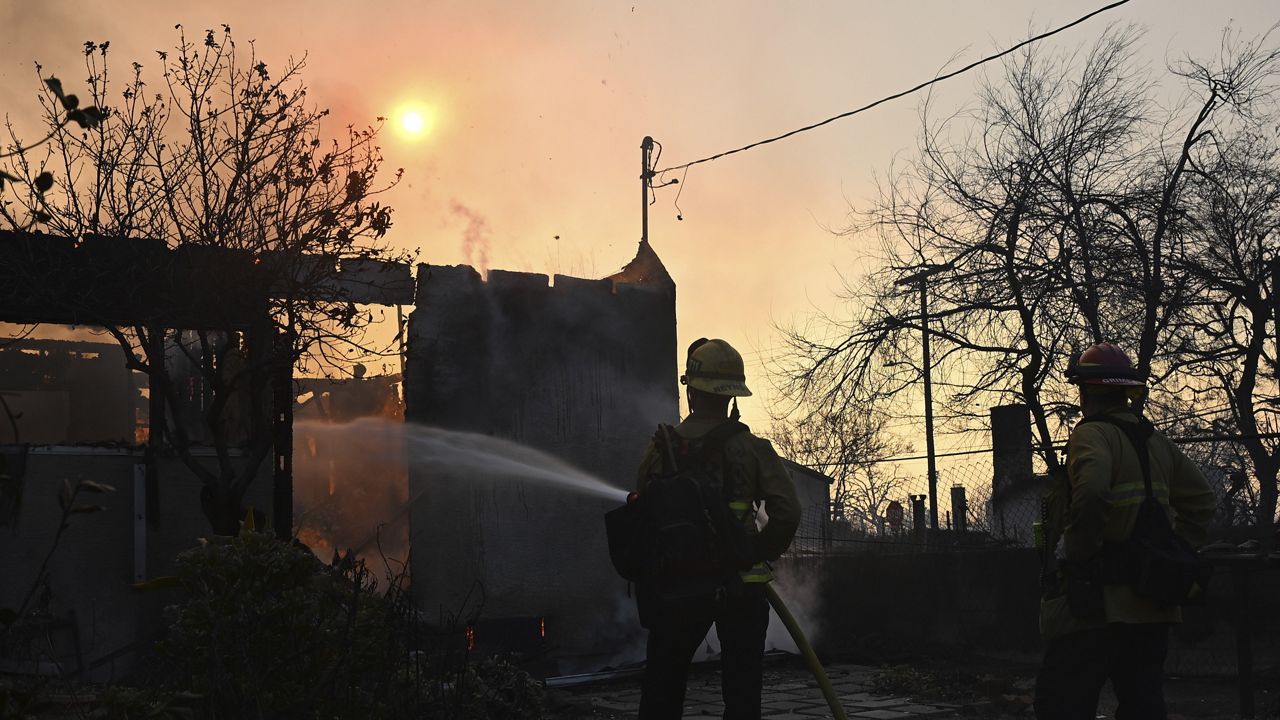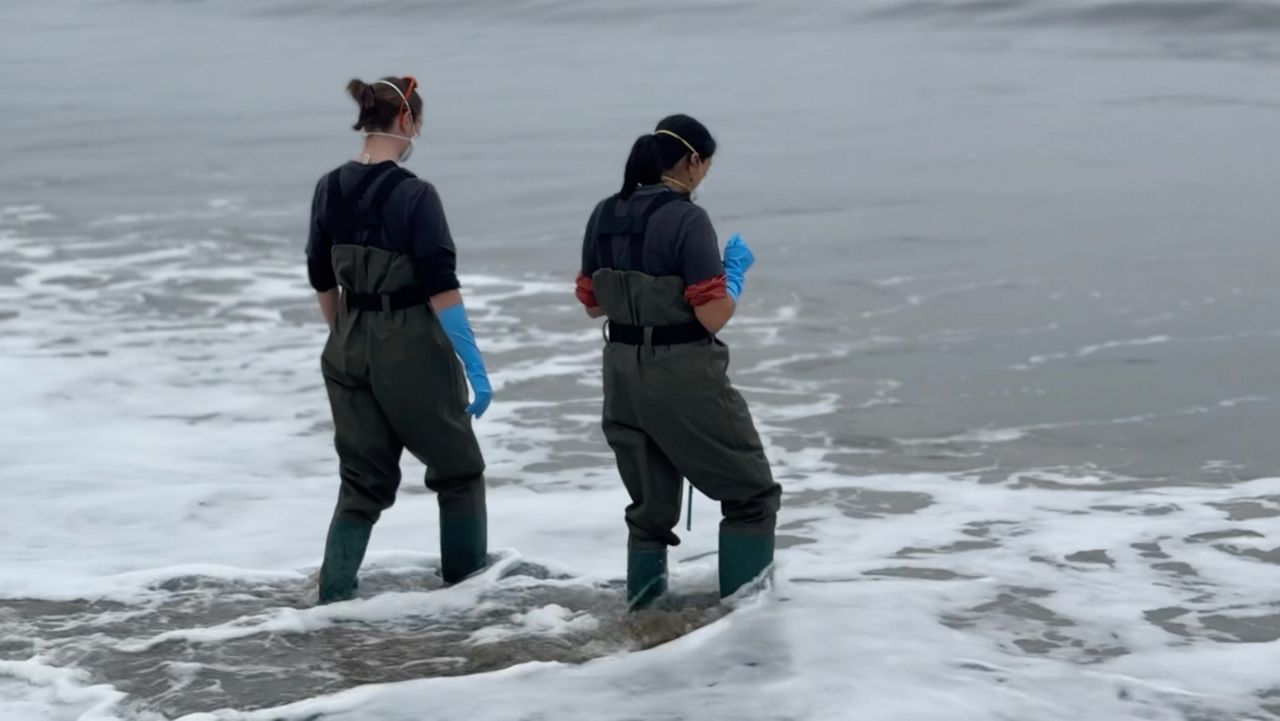LOS ANGELES — Soil samples collected from properties downwind of the Eaton Fire burn area contained elevated levels of lead, above health screening thresholds, according to the county Department of Public Health.
Health officials said some elevated lead levels were also found in the Palisades Fire area, but there was no evidence detected of "widespread contamination" in that burn area.
"Levels below the screening thresholds are considered protective over a lifetime of exposure, even for the most vulnerable people," according to a statement from the department. "If levels exceed the screening thresholds, it does not automatically mean cleanup is required, but it suggests the need to consider additional evaluation."
The testing was conducted between mid-February and mid-March, with soil samples collected from destroyed, damaged and intact properties within the burn areas, along with properties outside the burn zones. The tests measures levels of potentially harmful materials that could be typically anticipated following a wildfire, "such as heavy metals, polyaromatic hydrocarbons (PAHs), and dioxins."
The testing is aimed at evaluating the fires' overall impact on the environment.
Health officials said the elevated lead levels detected in the Eaton Fire area were consistent with similar findings in air testing conducted in the days immediately following the January blaze.
"The source of lead in the fire is reasonably expected to be from the burning of homes with lead-based paint, which was common prior to 1979," according to the Department of Public Health. "Caltech reported that more than 90 percent of the houses in Altadena were built before 1975."
In the Palisades Fire area, "isolated areas of heavy metal and PAH" above health thresholds were found in some soil samples.
"The source is unknown at this time, but these are not consistent with communitywide impacts from fire-related smoke plumes," health officials said.
The county agency noted, that "because there are many potential sources of lead in soil in the Los Angeles area, additional assessments will help understand how much of the lead found in the samples came from the 2025 wildfires versus other sources."
The county is expected to issue a final report in May.
"Those with concerns about their specific property may want to test their soil and/or consult an environmental professional about evaluating their property," according to a department statement. "In all areas with ongoing fire debris, residents are reminded to take precautions to not inhale, ingest or come into contact with ash, soot, and/or fire debris by using appropriate personal protective equipment.
"Additionally, community members are encouraged to review the soil sampling results and consider taking appropriate precautions if your home is in one of the areas where soil sample screening thresholds have been exceeded."
Additional information on the testing results is available online here.
The Department of Public Health is offering free blood-lead testing for people concerned about possible exposure. Such testing is available through residents' medical providers — with costs covered by most insurance plans, or by calling Quest Lab at 800-LA-4-LEAD, or at mobile testing being conducted at various community events.
More information on testing is available at ph.lacounty.gov/wildfires.










